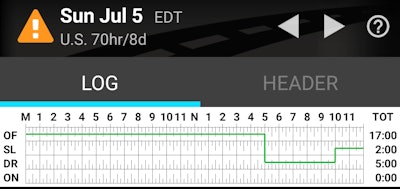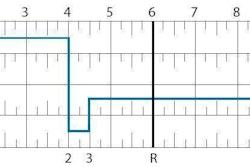 Want an in-depth look at a log example using a split-sleeper berth set-up? Click through the image above or check out the how-to at this link.
Want an in-depth look at a log example using a split-sleeper berth set-up? Click through the image above or check out the how-to at this link.Culminating a process that began more than two years ago — August 2018, when then-Administrator of the Federal Motor Carrier Safety Administration Ray Martinez announced the agency was undertaking a rule to reform federal hours of service regulations — truckers can begin operating under revised 14-hour rule and 30-minute break stipulations at one minute past the stroke of midnight tonight.
That’s 12:01 a.m. Eastern, Sept. 29 (9:01 p.m. Pacific, Sept. 28).
Though some readers ultimately expressed disappointment in the limited changes in the regs, and the potential for those changes to be misused by shippers, carriers or brokers in pressing drivers to work longer days, the overhauled hours-of-service rule does give drivers the ability to pause their 14-hour clock for multiple hours a day.
Likewise, it also could often eliminate the use of the 30-minute break in any given work day, or at least be taken in a workable way, as the new regs allow drivers to use the break in any duty status other than on-duty driving and shifts the break’s requirement to be within the first eight hours of drive time rather than the first eight hours on duty.
Overdrive editors have spent recent months diving into the various changes the rule brings and how drivers can use the new options available. Explore the links below for all of that coverage, and if you have any questions about the new regs, shoot me an email — [email protected] — and we’ll try to find the answer. Or, send an email or drop a comment below and tell us how you plan to use the new stipulations within the new regs.









